The picturesque medieval town of Corinaldo is a must in any Le Marche travel guide. Rightly so, since it has long been one of the most beautiful borghi (villages) in Italy; yes, in 2007 it was even voted THE most beautiful Borgo in Italy.
Elke’s husband stayed here in 2008 to look for a suitable house for the both of them and stayed at the Hotel Ristorante I Tigli, which is located in the middle of the old city walls. Even then he liked the city and the hotel very much! So we definitely recommend it!

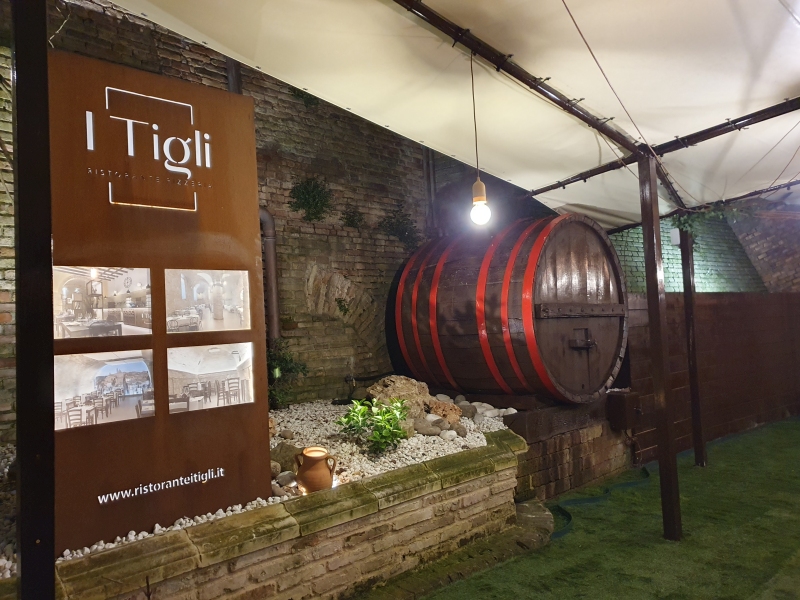
The most important festival is Festa dei Folli (Feast of the Nutter), a multi-day juggler’s festival, and Elke and Otto made some pictures of it and tell us all about Corinaldo.
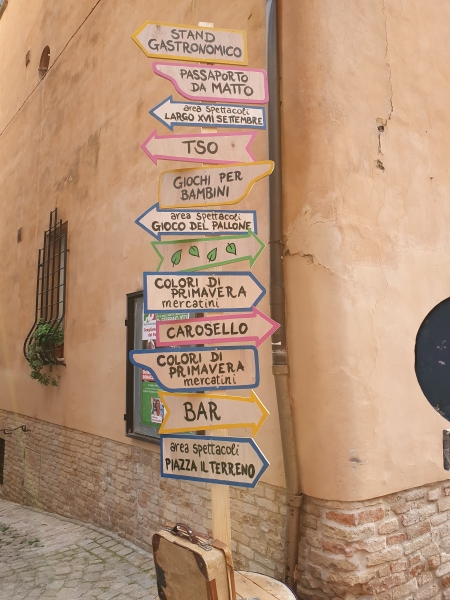

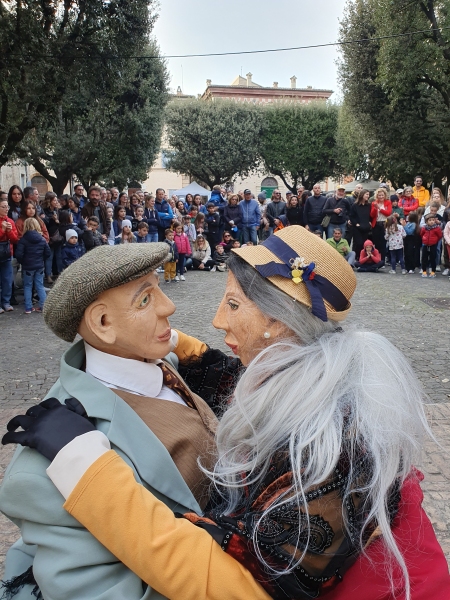
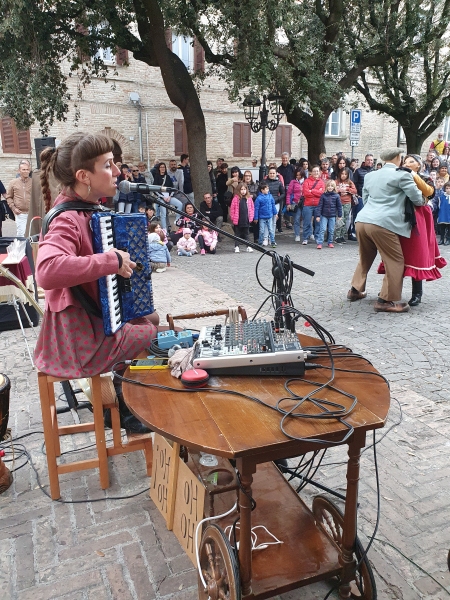
History of Corinaldo
According to legend, the little town of Corinaldo in the north of the province of Ancona, which has just under 5000 inhabitants, was already settled in 411, when the people of Roman Suasa fled to the surrounding mountains from the barbarian warlord Alaric.
For a long time, Corinaldo was a free commune that had to assert itself, squeezed between the Duchy of Urbino and the Marche of Ancona, especially during the fighting in Italy between the Ghibellini who were loyal to the emperor and the Welfs (Guelfi) who were loyal to the church. In 1248 Corinaldo even belonged to the Castelli of Jesi, in 1360 it was completely razed to the ground by Pope Innocent VI and rebuilt in 1367 by Pope Urban V with the impressive city walls that still exist today. This is probably how Corinaldo’s heraldic motto came about: Cineribus orta combusta revixi, which roughly means Risen from the ashes I have returned to life.
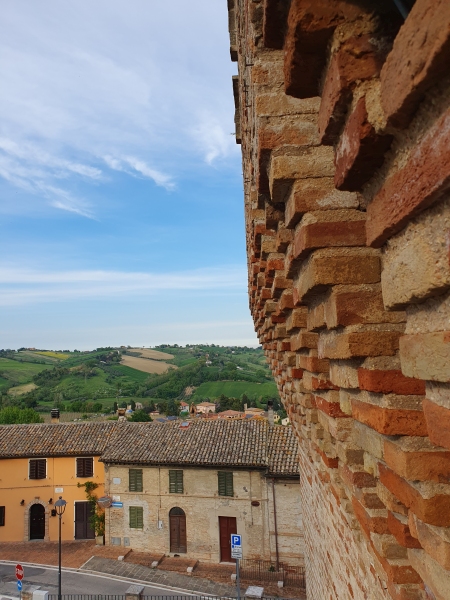
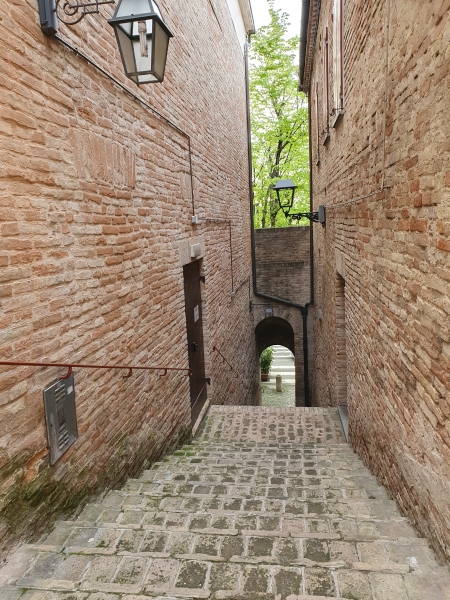
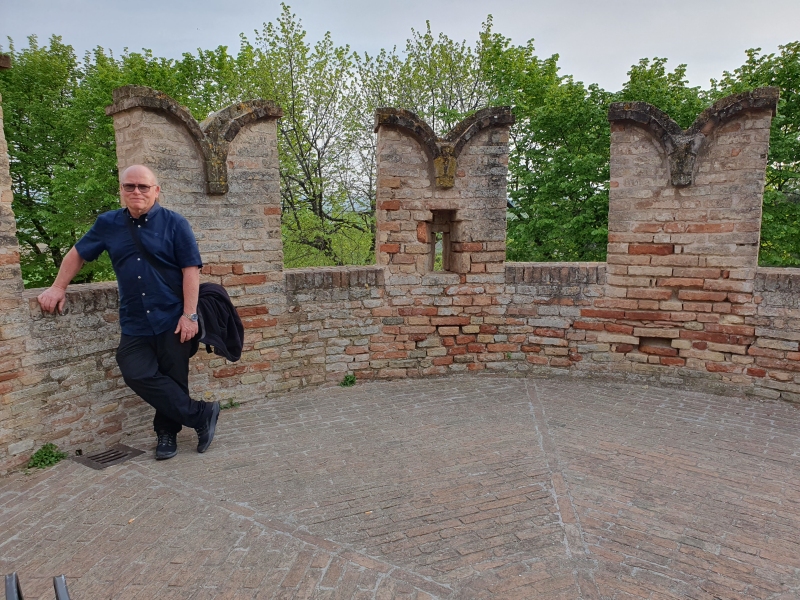
Various local ruling families ruled in Corinaldo, from the Malatestas to the Sforzas. When the citizens of Corinaldo repelled the attack of the Urbiner Francesco della Rovere in 1517 after a 23-day siege, Pope Leo X even granted the town city rights as a thank you for its loyalty to the Church.
Corinaldo flourished from the 17th century: meanwhile part of the Papal States, which was spreading in central Italy, it no longer had to defend its municipal borders and the steadily growing population ensured trade, culture, representative buildings and churches.
We start our tour of Corinaldo
So let’s start our sightseeing: We park outside the city walls and first treat ourselves to a little refreshment with a view at the popular Chiosco (kiosk), just outside Porta S. Giovanni.


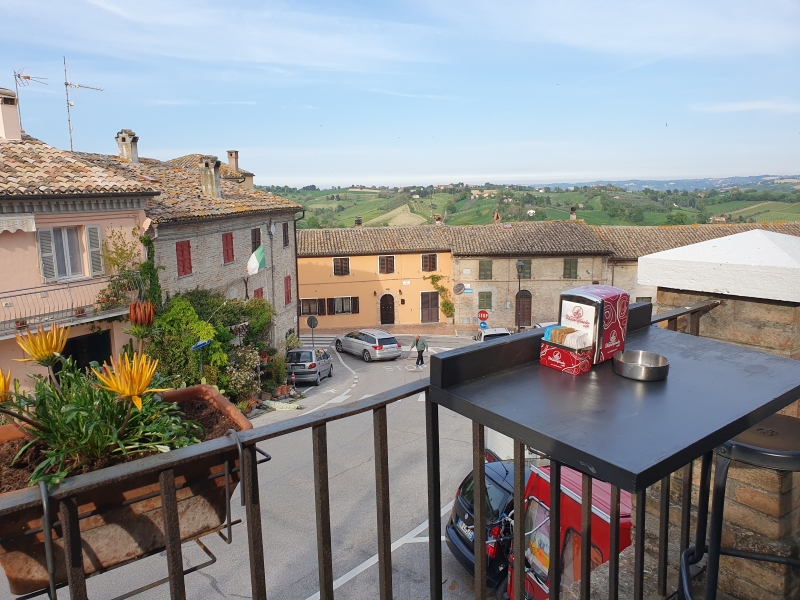
Opposite is the Church of San Francesco, in its current structure from the mid-18th century but built on the remains of a 13th-century church. Inside with paintings by the painter Claudio Ridolfi, who spent his twilight years in Corinaldo and to whom a museum in the center is dedicated.

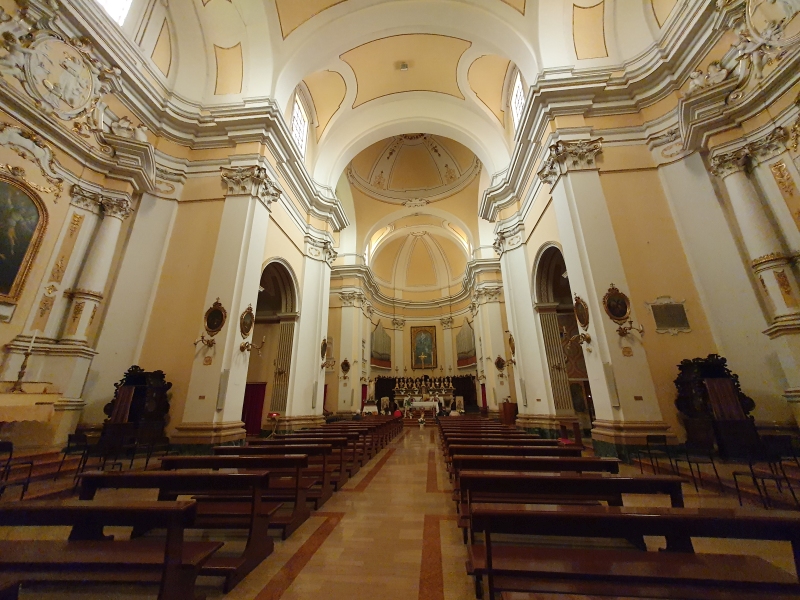
Then we start the tour along the approximately 1 kilometer long, well-preserved city wall. Mighty gates and towers can be found here, such as the Torre dello Scorticatore, the Porta Santa Maria Mercato or the Porta Nova. On the one hand, because the city had become safer from the 17th century onwards and no longer had to be guarded in this way and, on the other hand, the population had increased drastically due to the city’s prosperity, the guardhouses and towers embedded in the wall were quickly converted: in a 1-room A certain Liseppetta lived in the little room with fireplace and latrine until the 1960s, according to the sign on the wall. A ceramics workshop moved into another former prison tower.

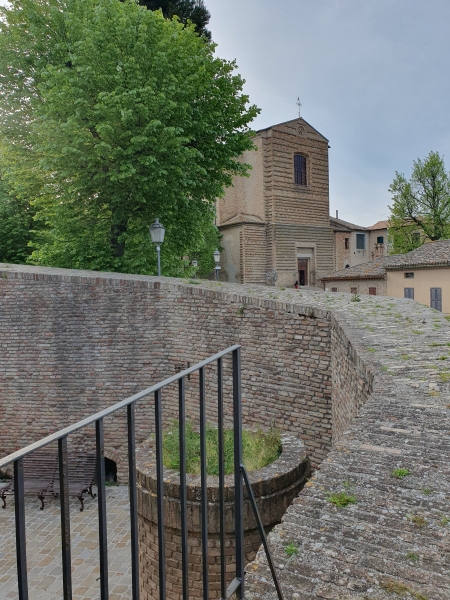
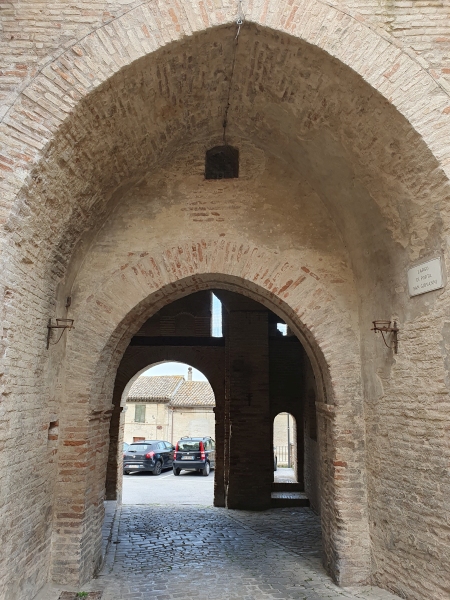
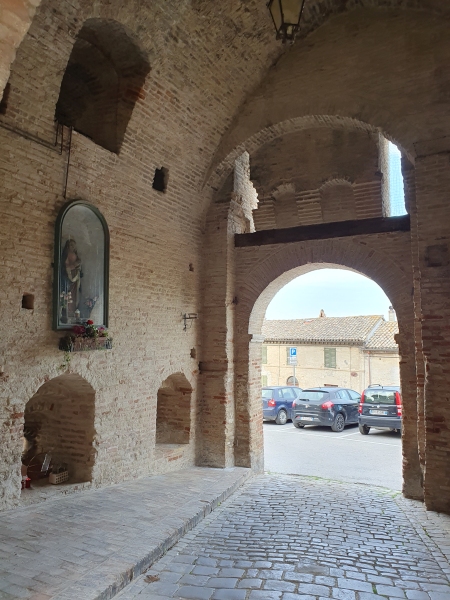
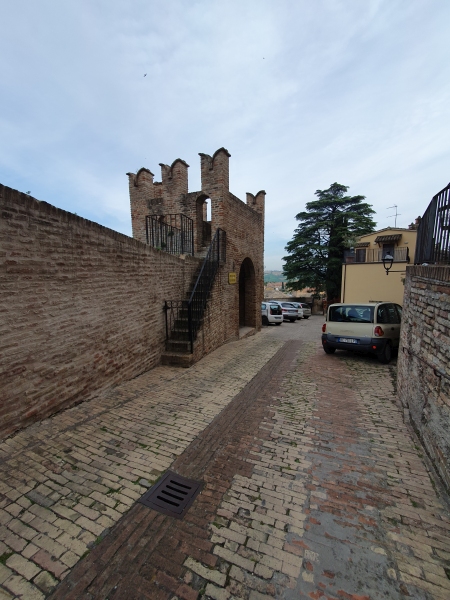
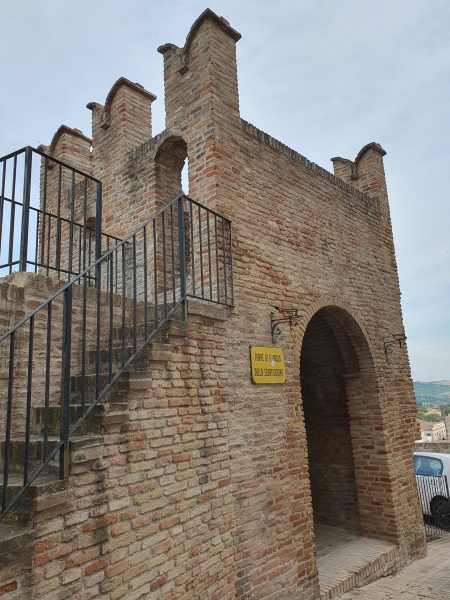
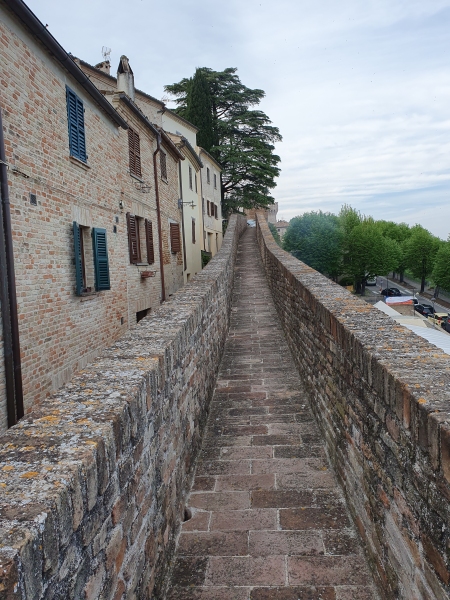
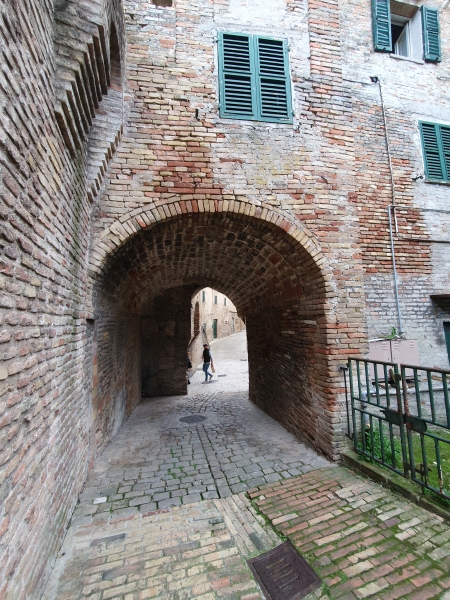

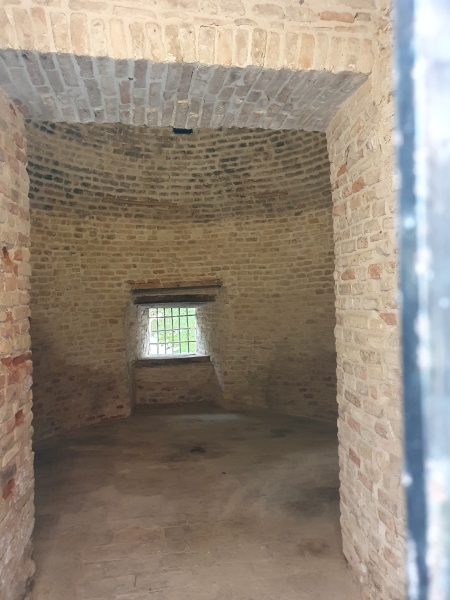
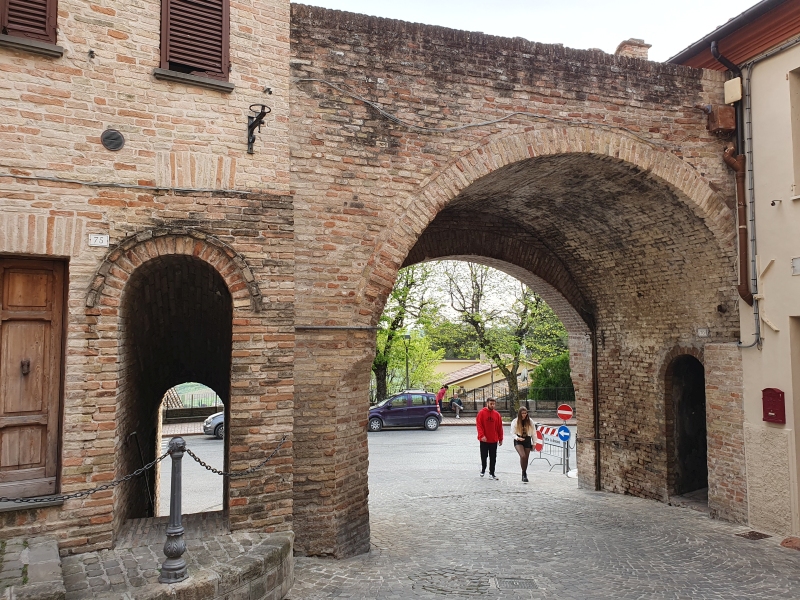
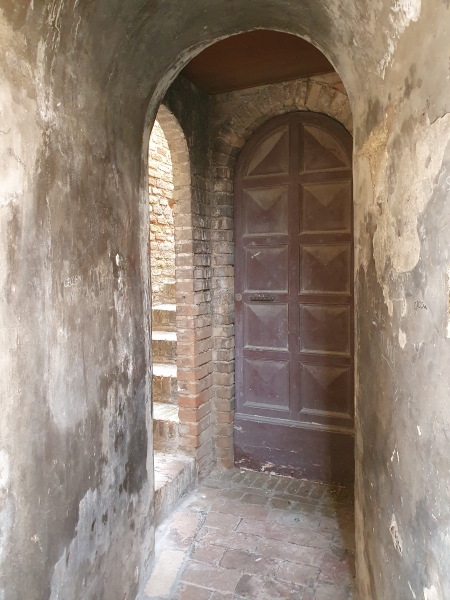
At Porta Santa Maria Mercato, a festive marching band comes towards us on what is probably the most photographed staircase in Marche, on the Scallinata del Pozzo della Polenta, also known as Piaggia. More on that later …
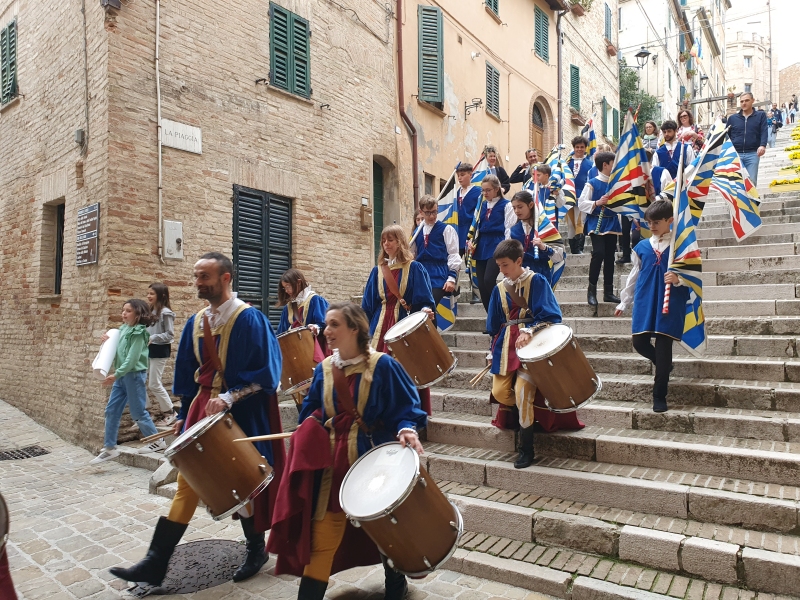
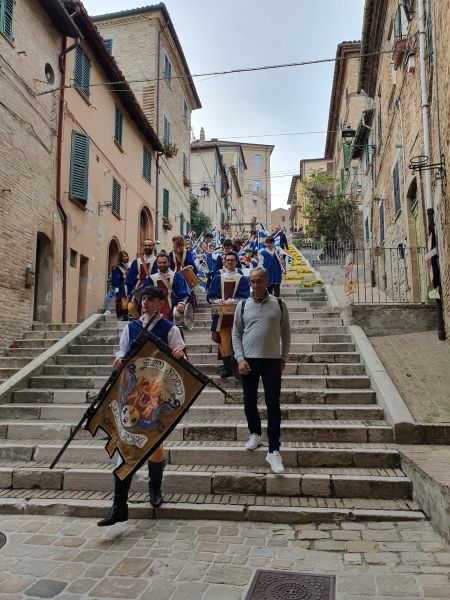
We walk a little further along the city wall, past the Hotel I Tigli and marvel at the 43 meter high Lebanon cedar (or Himalayan cedar) on the Piazza del Cassero, which has probably been here for a few 100 years. In this square there used to be the San Pietro church, of which only the tower remains today.
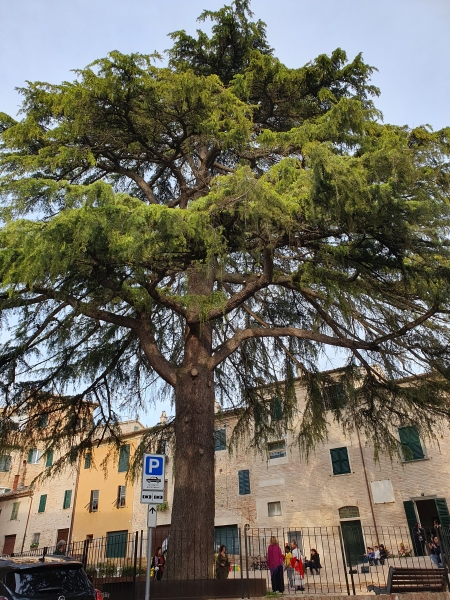

We slip briefly into some of the churches in the center: the 17th-century neo-classical Suffragio church, built on the remains of a fortified tower by the Anconetan architect Francesco Maria Ciaraffoni, and the baroque Madonna dell’Addolorato church, only visible from the outside once inconspicuous. Inside are some figures of saints, from the Madonna Dolorosa (the Sorrowful Madonna) to the well-known Italian saint Santa Lucia (always depicted with eyes in a bowl) to the saint whose traces are unmistakable throughout the town of Corinaldo: Saint Maria Goretti, the was born in Corinaldo and not even 12 years old, suffered a violent death near Rome:
Martyrdom of Saint Maria Goretti
Maria, also known affectionately as Marietta, was the eldest daughter of a widowed, poor tenant farmer. Alessandro, the landlord’s 16-year-old son, often followed the 11-year-old girl and tried to rape her one day in 1902. He injured her with 14 stitches from an awl so badly that she later died from her injuries.
She was beatified by Pope Pius XII in 1947 and canonized in 1950 in front of half a million believers in St. Peter’s Square. The justification for the canonization reveals a lot about the church’s image of women in the early 1950s: the woman (the girl!) is a lovable victim and forgives the rapist for his aggression against her. Ward off the tormentor so that he doesn’t commit a sin and go to hell. He is serving 20 years in prison, repents and works from now on as a gardener in a Franciscan monastery.
I was reconciled that they now also present the story of Maria Goretti differently in Corinaldo – that’s how I see it on a poster in one of the churches: Now the aspect is positively emphasized that Marietta fought back and was therefore a role model for other women and girls should be, to be self-confident and not to put up with everything.
In many places in the village we see information boards and commemorative plaques dedicated to Maria Goretti; A sanctuary is even dedicated to her, in which both Maria’s mother and – as a sign of reconciliation – the perpetrator Alessandro are buried.
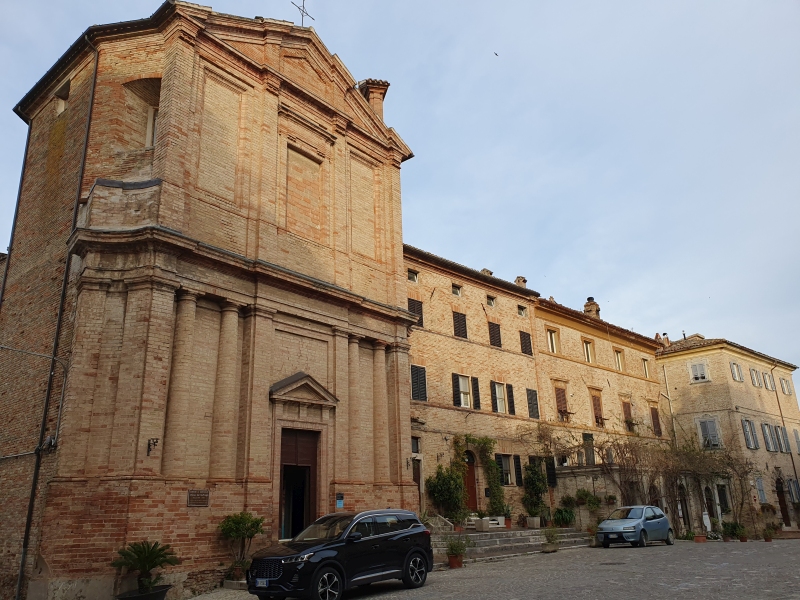
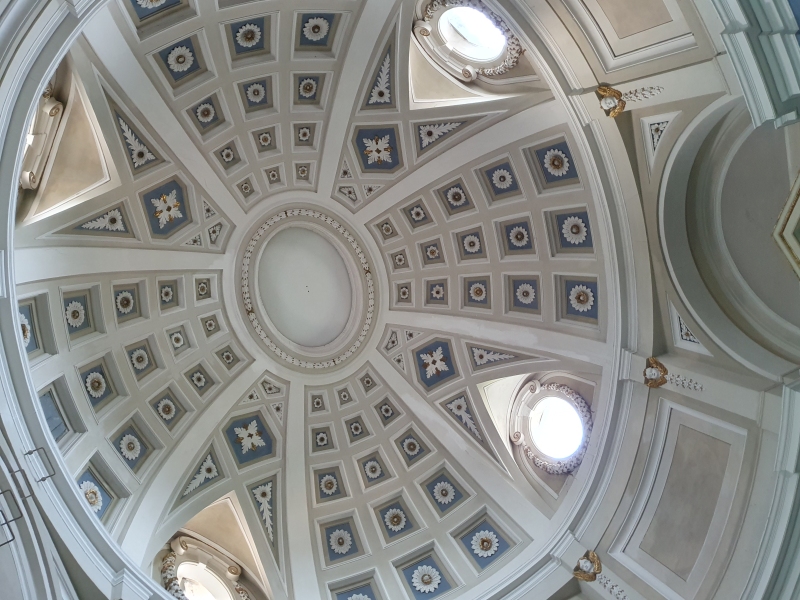

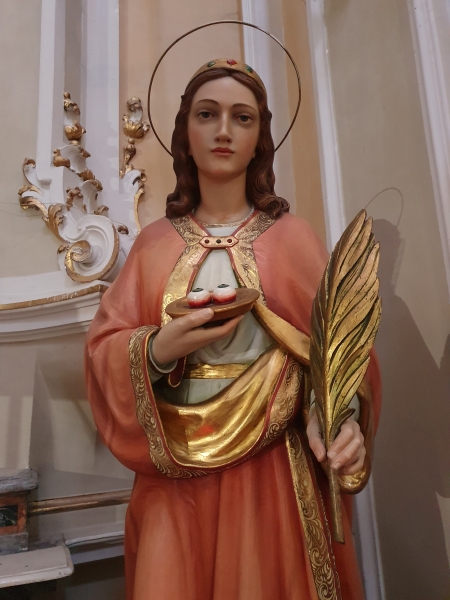
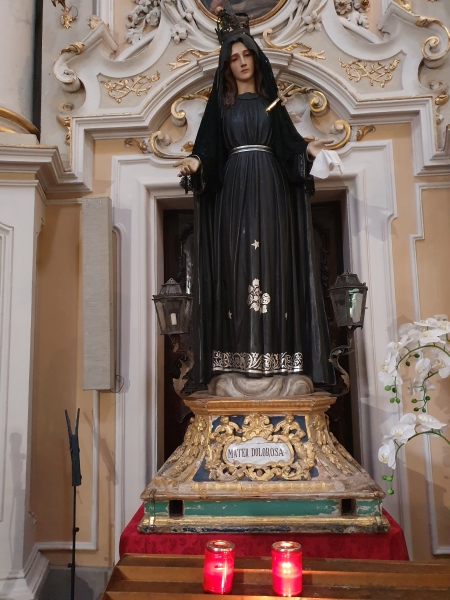
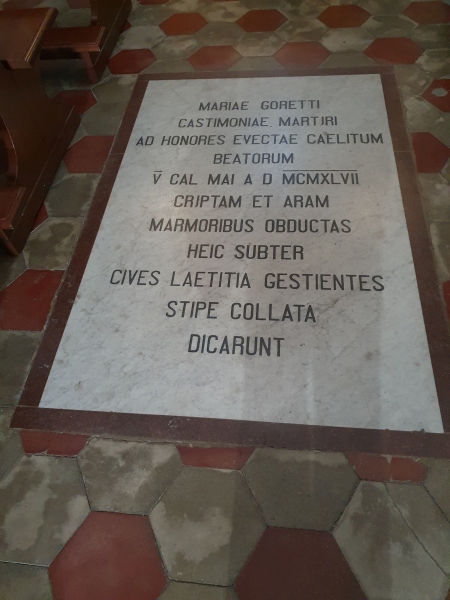

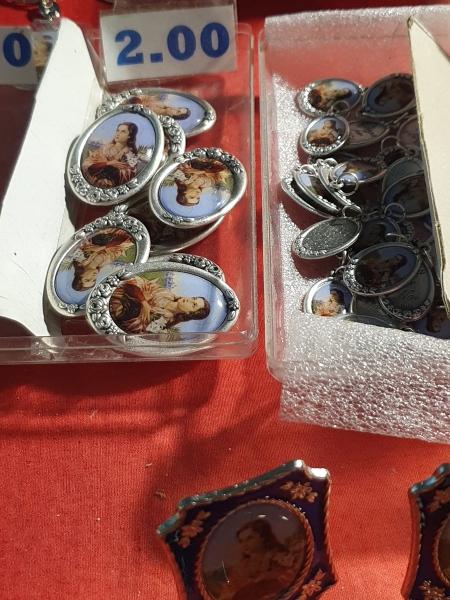
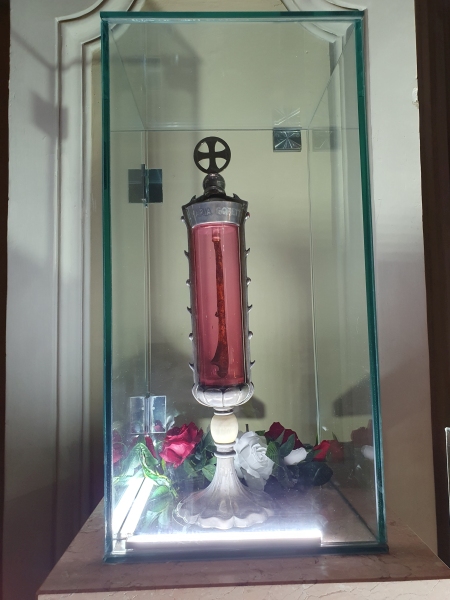
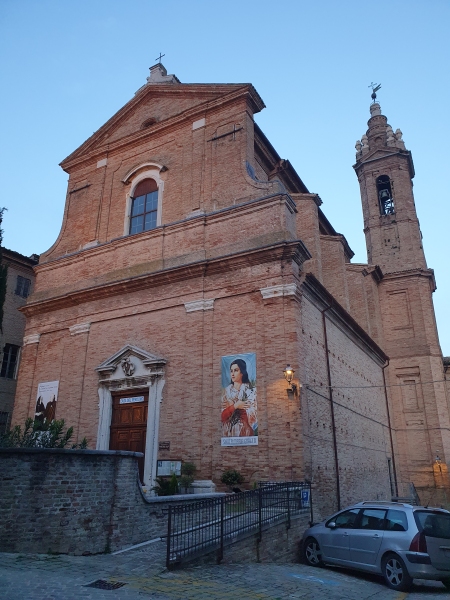
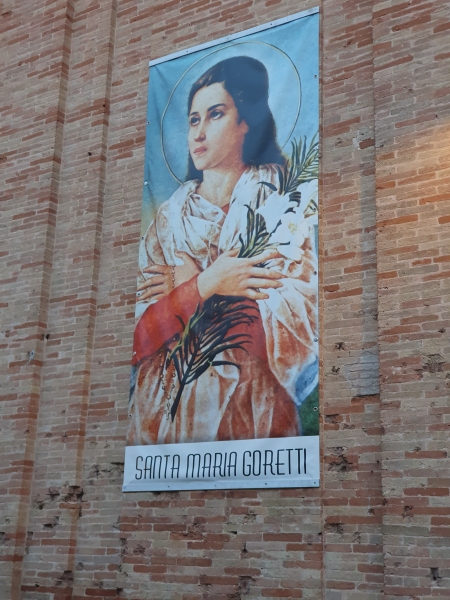
Museums and theaters in Corinaldo
Continue to the secular buildings on Via del Corso, such as the former Augustinian convent that now houses the Claudio Ridolfi Museum: with works by the artist, with a collection of Sicilian reliquaries and with excavations of finds from the Piceno period. Unfortunately, the museum was already closed, as was the Museum of Costumes and Folk Traditions. We also only look at the Teatro Goldoni and the palazzo of the municipality from the outside:
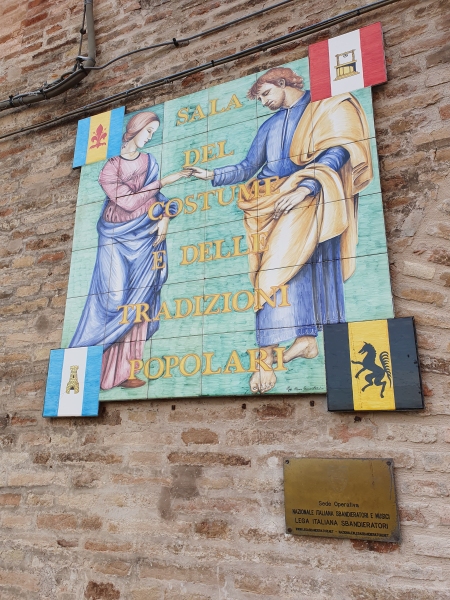

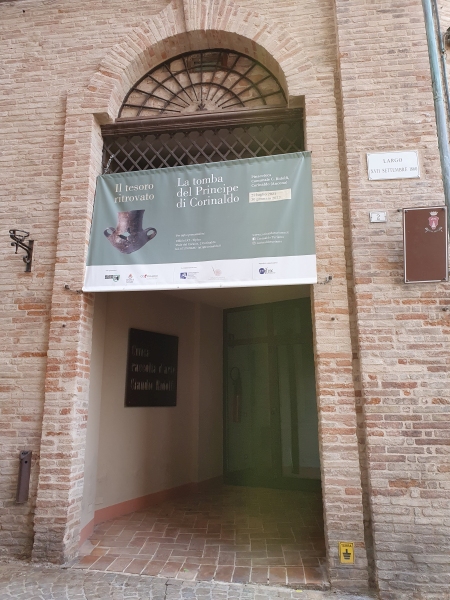
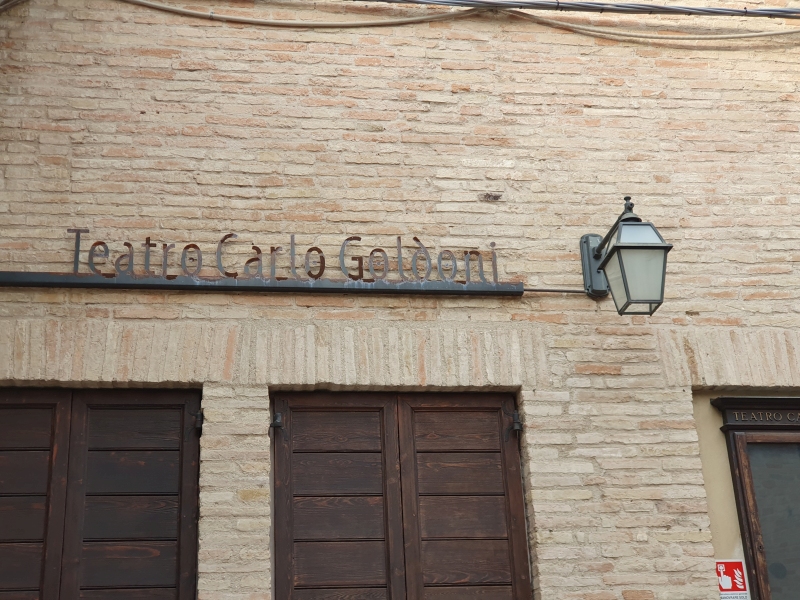
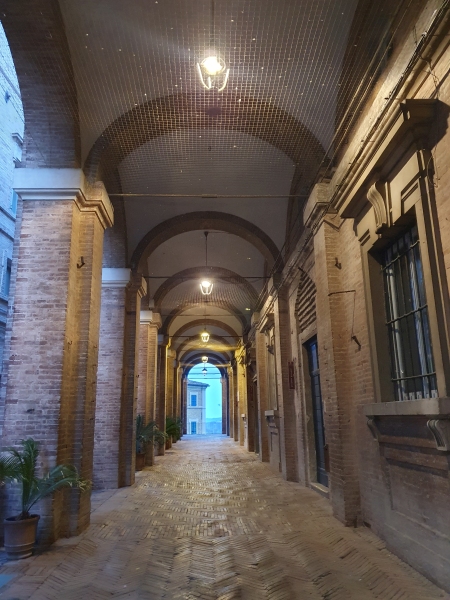
Pozzo della Polenta (Polenta well)
It is now early evening. Via the Piaggia, the 100-step staircase with the Pozzo della Polenta fountain, we head towards the marquee. Originally from the 15th century, the name of the fountain comes from this curious story:
A long time ago, an old man was carrying a heavy sack of cornmeal up the long flight of stairs. In the middle of the stairs, by the well, he took a little breather, and the sack of flour fell into the well. There are different versions of what happened next, but they all end with the town celebrating a big polenta festival using the wet cornmeal salvaged from the well. Since the 1980s, there has therefore been a big town festival in June or July, called Contesa del Pozzo della Polenta, during which the historic defense against the attack by Francesco della Rovere in 1517 is re-enacted
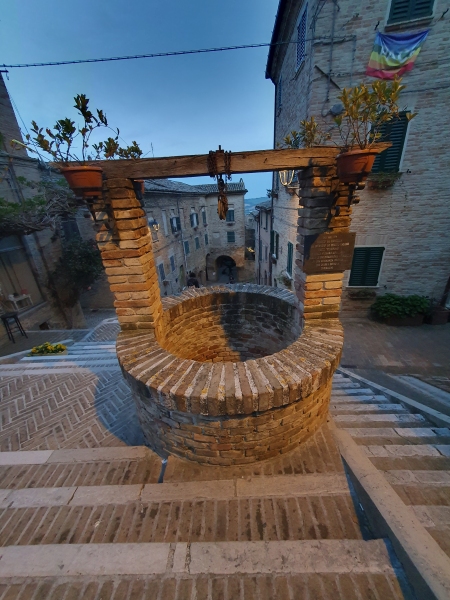
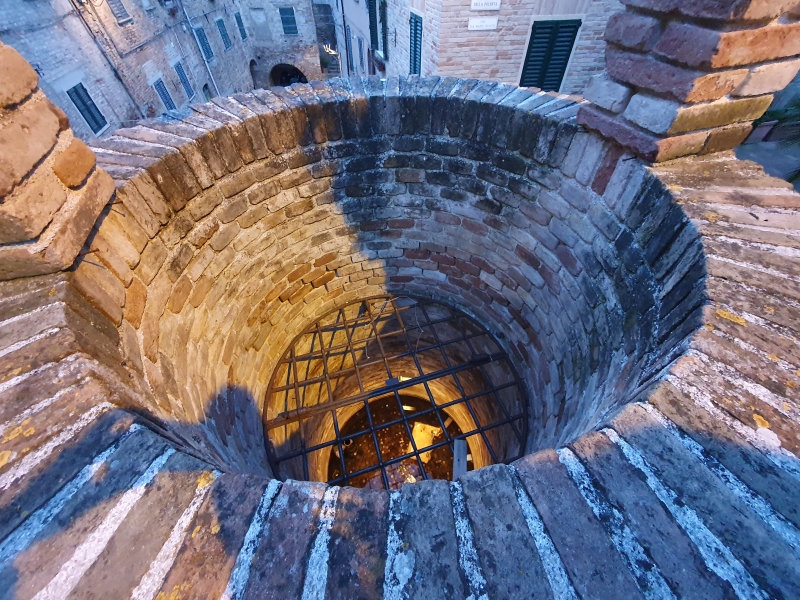


The pozzo della polenta made us hungry, so at the end of the day we go to the marquee outside the city walls to strengthen ourselves with pasta and good Verdicchio wine from the area. The vibe is good and nobody complains about the long line at the checkout as long as the food is good and the wine is flowing.
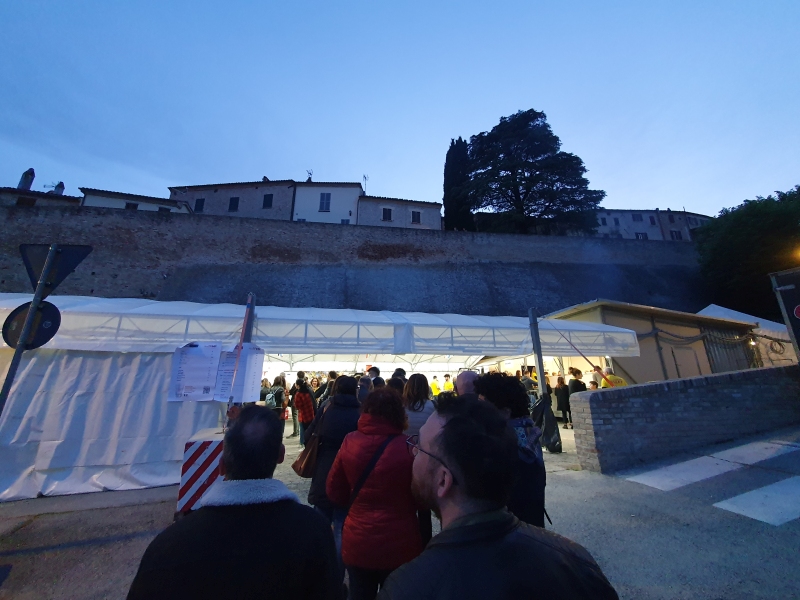
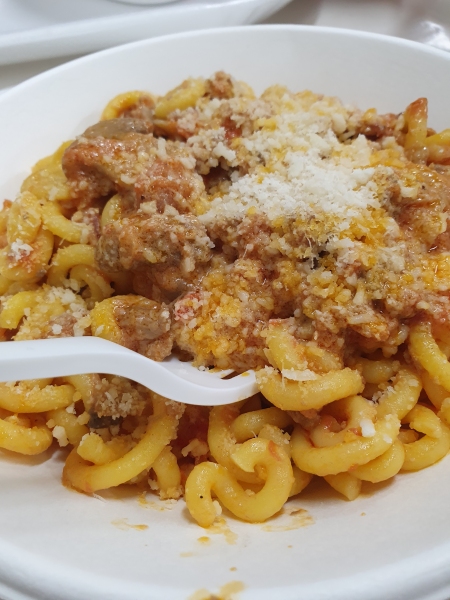
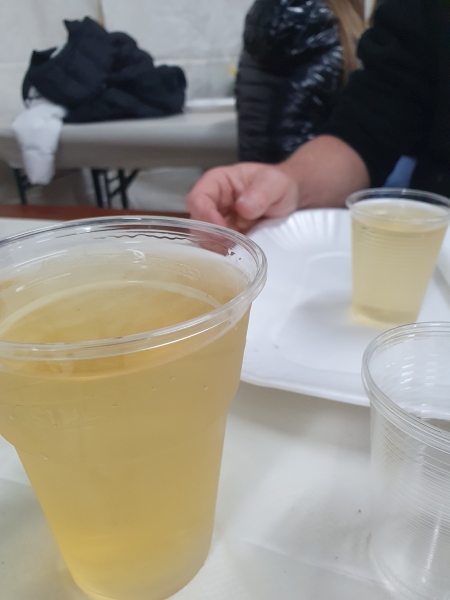
In the meantime it has gotten dark and we drive home, not without taking another look at some of the beautiful illuminated towers of the city wall…
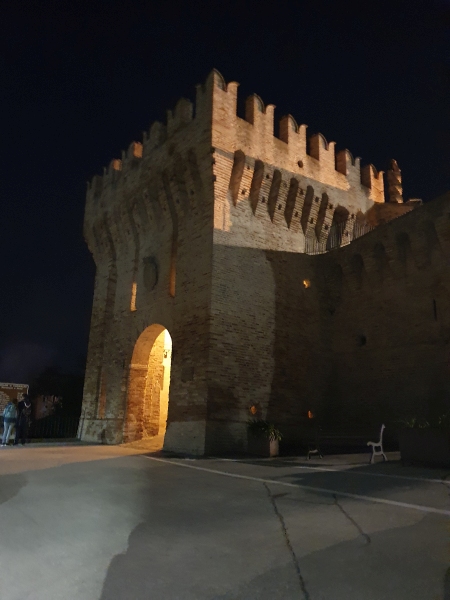
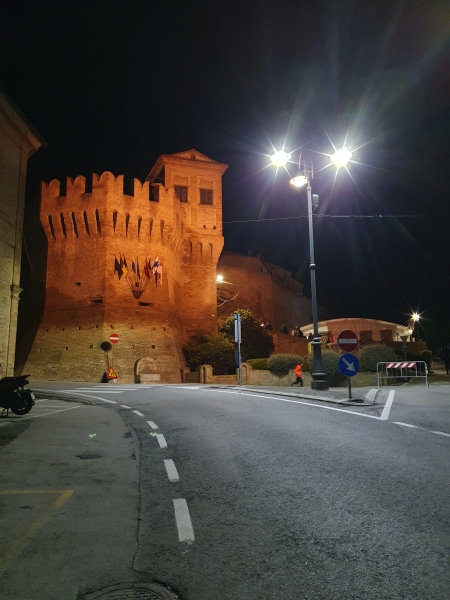
Summer program in Corinaldo
Corinaldo is actually always worth a visit and a number of festivals and events attract guests throughout the year. Here – fresh from the tourist information – the summer program up to the now notorious Halloween festival at the end of October:
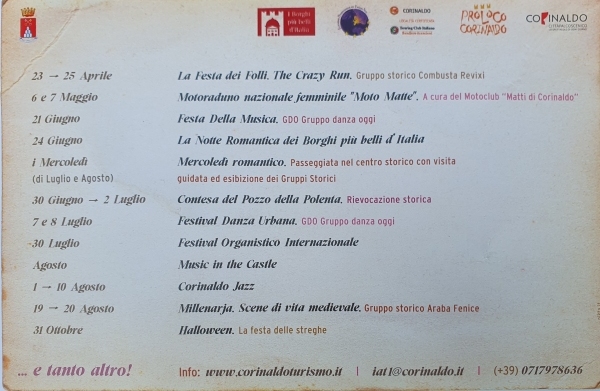
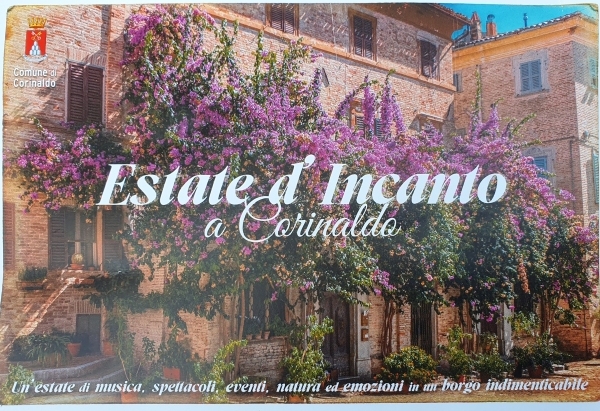
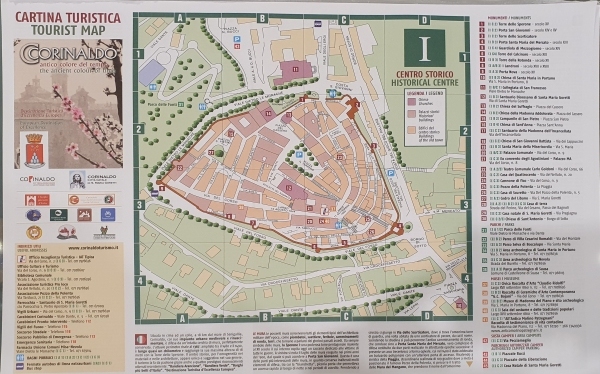


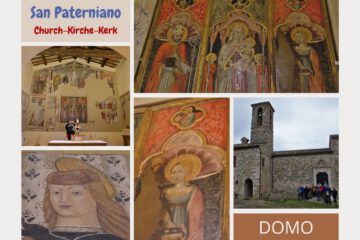
0 Comments